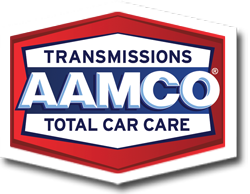Serpentine Belt, Timing Belt, and Hose Repairs
Locally Owned Transmission and Total Car Care Auto Shop
The belts and hoses in your vehicle may look unassuming, but they power nearly every feature in your vehicle. Hoses deliver hydraulic pressure to your brakes and other components. Belts transfer energy from the crankshaft to the moving parts that start, steer, heat, and cool your vehicle – not to mention keeping your engine cranking correctly. A leaky hose or loose belt can impact the performance of the affected part. A broken belt or hose can disable your vehicle.
Having an issue with your serpentine belt, timing belt, or hoses? We are a locally owned and operated full service auto repair center. AAMCO Cheyenne will get you back on the road safely – come to us at the first sign of damage to your belts and hoses.
Serpentine Belt, Timing Belt, and Hose Repairs in Cheyenne, WY
Types of Hoses in Your Vehicle
Here are some types of automotive hoses you’ll most frequently hear about in your vehicle maintenance routine:
- Radiator hoses: Carry coolant (a mixture of water and antifreeze) between the engine and the radiator. Radiator hoses are made of strong rubber to withstand the dramatic temperature changes as the coolant absorbs heat from the engine and is cooled by the radiator.
- Heater core hoses: Carry hot coolant through your climate control system to warm your cabin. They’re also made of durable rubber.
- Fuel hoses: In older vehicles, these connect the fuel tank to the engine. They require a type of rubber that can chemically withstand exposure to fuel. In modern vehicles, fuel is delivered via fuel-injection in pressurized metal tubes.
- Brake hoses: Carry brake fluid from the (metal) brake lines to the calipers.
- Air intake hoses: Carry oxygen to your engine to ensure the correct air/fuel mixture for combustion.
- Other automotive hoses: Help operate the systems in your vehicle, such as the power steering hoses, A/C high- and low-pressure hoses, PCV valve hose, and the oil cooler hose.
Maintenance and Care:
Coolant and radiator hoses should be checked twice a year (and are inspected as part of AAMCO Cheyenne’s Vehicle Courtesy Check). Hoses should be changed at least every four years, or more often as needed to prevent leaks and bursts. Please refer to your owners manual for factory recommended maintenance intervals for your specific vehicle. Bring your vehicle to the experts at AAMCO Cheyenne.
Types of Belts in Your Vehicle
- Serpentine belt and other drive belts: Powers your alternator, climate control, and power steering with energy from the crankshaft.
- Timing belt or timing chain: Helps turn the camshaft of your engine, coordinating the rhythm of your engine valves and pistons. Also known as a gilmer belt or camshaft belt.
- Other automotive belts: Alternator belt, fan belt, power steering belt, A/C belt, and more. These belts work with your serpentine belt to drive their respective parts.
Maintenance and Care:
Belts should be inspected every time the oil is changed (and are inspected as part of AAMCO Cheyenne’s Vehicle Courtesy Check). Please refer to your owners manual for factory recommended maintenance intervals for your specific vehicle.
A rule of thumb is failure rates for serpentine belts are much higher after 50,000 miles, and for the “V” shaped belts, 36,000 miles. If you have any questions or concerns, a trained technician at your local AAMCO Cheyenne center can pinpoint any potential problems, potentially saving you money and the inconvenience of a breakdown.
Legal: Support for “Belts should be inspected every time the oil is changed” and “A rule of thumb is failure rates for serpentine belts are much higher after 50,000 miles, and for the “V” shaped belts, 36,000 miles.
What are the signs of worn car belts and hoses?
Here are some signs that your vehicle’s belts and hoses need service:
- Chirping or squealing noise: Could be the sound of a loose or damaged belt, or possibly an oil or fluid leakage.
- Visibly loose belt: Replace the belt unless it’s a serpentine belt designed for periodic manual adjustment.
- Visible belt or hose wear: Belts should be free of cracks, rust, or rib damage. Hoses should be free of holes and tightly connected.
- Leaking fluid around a hose or under your car: Any fluid leak should be evaluated by a mechanic.
- Battery problems: Your car doesn’t start, your battery light is on, or the lights are dimmer in your cabin and on the instrument panel? Your alternator belt may be failing.
- Engine problems: Metal shavings in your engine oil, or the engine misfires, rattles, or won’t start? Your timing belt or chain may need service.
- Vehicle system failure or overheating: Power steering, alternator, engine cooling, brakes, climate control: all can be disabled by a belt or hose failure.
Our AAMCO Cheyenne expert technicians take the time to thoroughly explain your vehicle’s condition and tell you which problems are urgent and which can wait. We discuss the best options for your budget and provide a written estimate before making any repairs.

